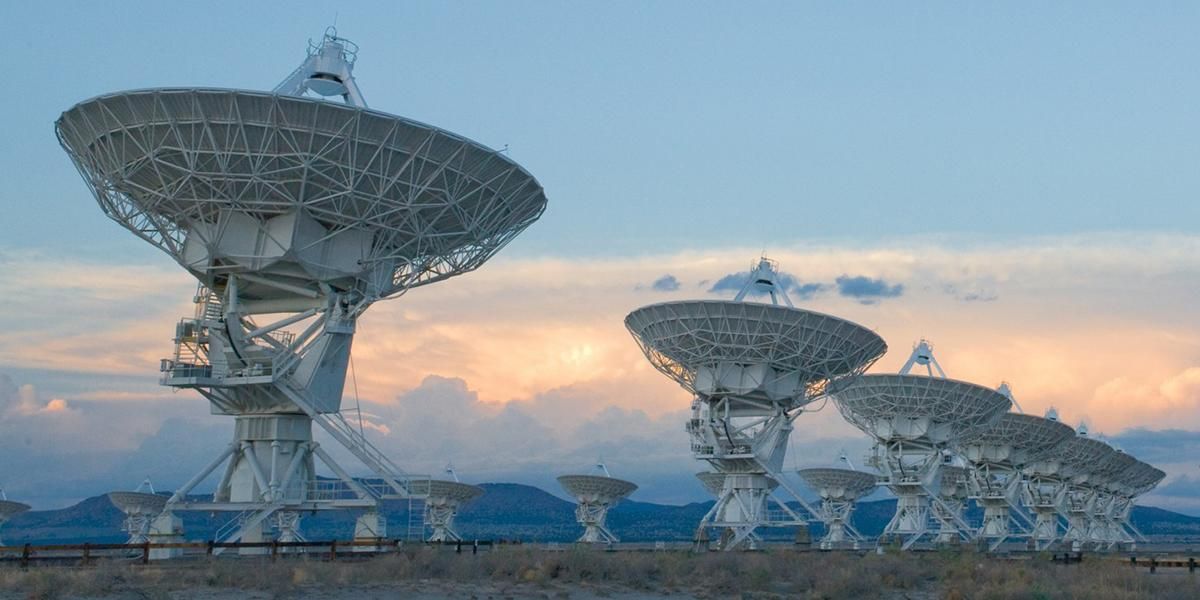The Search for Extraterrestrial Intelligence Gets an Upgrade
Article by Payal Dhar April 17, 2020 (spectrum.ieee.org)
• For over two decades, the SETI@home project harnessed the surplus computing power of over 1.8 million computers around the globe to analyze data collected by radio telescopes for narrow-band radio signals from space that could indicate the existence of extraterrestrial technology. SETI@home volunteers returned about 15 terabytes of data to analyze. On March 31st, SETI@home stopped posting new data for volunteers’ computers to process.
• SETI astronomer and project director of the SETI@home project, Eric Korpela, says that this isn’t the end of the road for the SETI project. The next phase of the project, says Korpela, is “to sift through the billions of potential extraterrestrial signals that our volunteers have found and find any that show signs of really being extraterrestrial,” and not just a human-made signal.
• So what indicates an extraterrestrial signal? “Nearby signals, from an (Earth-based) radar system for example, typically are seen at many positions on the sky,” says Korpela. But if we “come back and look at the same spot a month later and it’s still there, then maybe we have something.” “[I]f we think we’ve got something, we check to see if the same signal ever came from somewhere else.”
• Meanwhile, the SETI Institute is collaborating with the National Radio Astronomy Observatory to employ the world’s most versatile radio telescope, the Very Large Array of 27 dishes, to enable a SETI survey that will be far more powerful than any previous searches. The institute is developing a new interface called COSMIC (Commensal Open-Source Multimode Interferometer Cluster) that will access raw data from each antenna and route it through signal processing software to search for extraterrestrial technosignatures in real-time. ‘COSMIC SETI’ will process in excess of 300 GB/second of data.
• Notwithstanding SETI’s utter failure to find any sign of extraterrestrial intelligence in our galaxy, Korpela says, “[I]t’s very unlikely that we are alone.” “They (extraterrestrial beings) aren’t right next door, but they may be within a thousand light years or so.”
• [Editor’s Note] “They aren’t right next door, but they may be within a thousand light years or so.” This is what SETI wants you to think. The truth is that they are next door. Extraterrestrial beings are everywhere: throughout the galaxy and universe, on Earth-based secret space program bases and colonies throughout our solar system, in underground military/deep state facilities, and walking unnoticed in our cities. There are even non-human beings’ civilizations that exist within vast caverns deep under the Earth’s surface.
SETI is a deep state disinformation asset that is wasting an incredible amount of money and scientific resources only to make people believe that smart people are trying their best to locate intelligent extraterrestrial life in our galaxy, but so far they have found none at all. One day soon, hopefully, SETI will be held accountable for perpetuating this deep state lie for the past sixty years.
We’ve all wondered at one point or another if intelligent life exists elsewhere in the universe. “I think it’s very unlikely that we are alone,” says Eric Korpela, an astronomer at the University of California Berkeley’s Search for ExtraTerrestrial Intelligence (SETI) Research Center. “They aren’t right next door, but they may be within a thousand light years or so.”
Korpela is project director of the SETI@home project. For more than two decades, that project harnessed the surplus computing power of over 1.8

million computers around the globe to analyze data collected by radio telescopes for narrow-band radio signals from space that could indicate the existence of extraterrestrial technology. On 31 March 2020, SETI@home stopped putting new data in the queue for volunteers’ computers to process, but it’s not the end of the road for the project.
Now begins the group’s next phase. “We need to sift through the billions of potential extraterrestrial signals that our volunteers have found and find any that show signs of really being extraterrestrial,” says Korpela. That task is difficult, he adds, because humans “make lots of signals that look like what we would expect to see from E.T.”
The primary indicator that his team uses to determine whether a signal might be extraterrestrial is whether that signal remains stable in the sky. “So if we look at a spot in the sky and see a signal, and then come back and look at the same spot a month later and it’s still there, then maybe we have something,” he says. In addition, he notes: “Nearby signals, from a radar system, for example, typically are seen at many positions on the sky, so if we think we’ve got something, we check to see if the same signal ever came from somewhere else.” SETI@home volunteers have returned about 15 TB of data to analyze, Korpela reports.
FAIR USE NOTICE: This page contains copyrighted material the use of which has not been specifically authorized by the copyright owner. ExoNews.org distributes this material for the purpose of news reporting, educational research, comment and criticism, constituting Fair Use under 17 U.S.C § 107. Please contact the Editor at ExoNews with any copyright issue.







